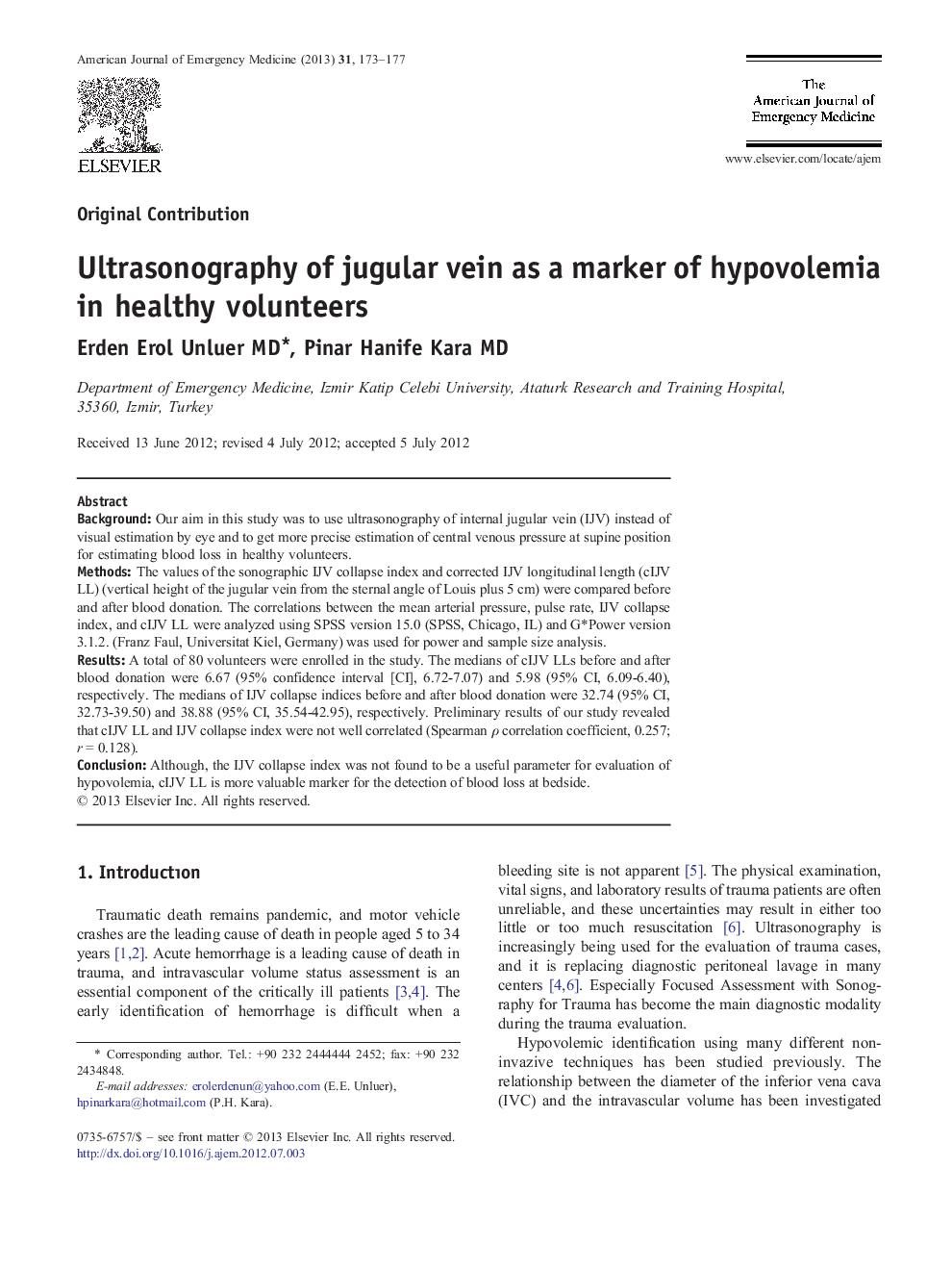| Article ID | Journal | Published Year | Pages | File Type |
|---|---|---|---|---|
| 3224154 | The American Journal of Emergency Medicine | 2013 | 5 Pages |
BackgroundOur aim in this study was to use ultrasonography of internal jugular vein (IJV) instead of visual estimation by eye and to get more precise estimation of central venous pressure at supine position for estimating blood loss in healthy volunteers.MethodsThe values of the sonographic IJV collapse index and corrected IJV longitudinal length (cIJV LL) (vertical height of the jugular vein from the sternal angle of Louis plus 5 cm) were compared before and after blood donation. The correlations between the mean arterial pressure, pulse rate, IJV collapse index, and cIJV LL were analyzed using SPSS version 15.0 (SPSS, Chicago, IL) and G*Power version 3.1.2. (Franz Faul, Universitat Kiel, Germany) was used for power and sample size analysis.ResultsA total of 80 volunteers were enrolled in the study. The medians of cIJV LLs before and after blood donation were 6.67 (95% confidence interval [CI], 6.72-7.07) and 5.98 (95% CI, 6.09-6.40), respectively. The medians of IJV collapse indices before and after blood donation were 32.74 (95% CI, 32.73-39.50) and 38.88 (95% CI, 35.54-42.95), respectively. Preliminary results of our study revealed that cIJV LL and IJV collapse index were not well correlated (Spearman ρ correlation coefficient, 0.257; r = 0.128).ConclusionAlthough, the IJV collapse index was not found to be a useful parameter for evaluation of hypovolemia, cIJV LL is more valuable marker for the detection of blood loss at bedside.
